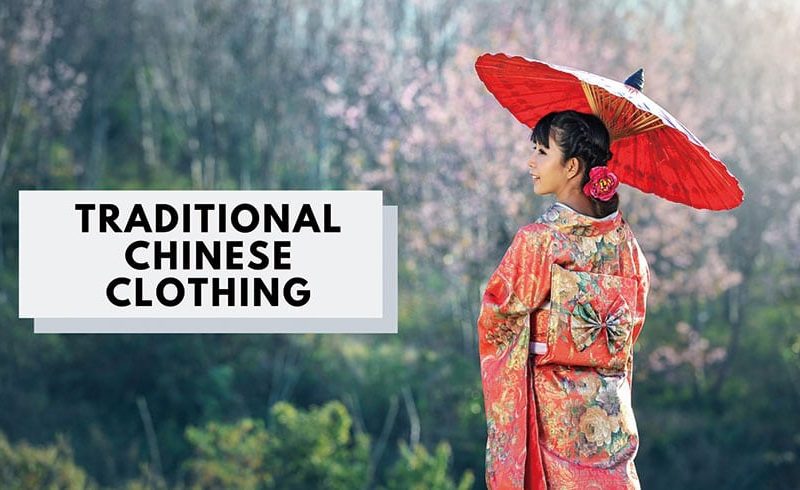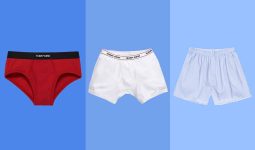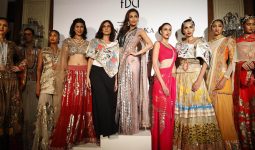There are four main types of traditional Chinese clothing: the Hanfu, Zhongshan suit (Mao suit), Tang suit, and cheongsam (qipao).
According to artifacts and traditional arts of Chinese culture, Chinese clothing includes the ancient hanfu and modern variations of indigenous Chinese dress.
Chinese clothing has evolved through dynastic traditions and foreign influences. As one of China’s foremost cultural facets, it showcases the country’s traditional fashion sensibilities.
Below is the list of traditional Chinese clothing.
1. Zhongshan Suit
In China, the modern Chinese tunic suit is also known as the Zhongshan suit. However, it was named after Sun Yat-sen, the Republican leader (Sun Zhongshan).
Shortly after they founded the Republic of China, Sun Yat-sen introduced a national dress style with distinct political overtones.
He designed the suit based on the Japanese cadet uniform. Each of the four pockets symbolizes one of the Four Virtues.
Furthermore, they wear this traditional Chinese clothing to symbolize national sovereignty at the most formal ceremonies.
While other Politburo Standing Committee members and other Politburo officials wear European business suits for military parades in Beijing, China’s paramount leaders always wear Mao suits.
When attending state dinners, Chinese leaders are expected to wear Mao suits.
The Mao suit is comparable to a monarch’s military uniform or a tuxedo for a supreme leader as a form of evening dress.
2. Cheongsam
Cheongsam is a type of body-hugging dress that originated in Manchu culture. It is a high-necked fitted dress with a side slit.
During the 1920s and 1930s, Chinese socialites and upper-class women in Shanghai popularized the Mandarin gown, another popular traditional Chinese clothing item.
However, the Manchus used the Eight Banner system during the Qing dynasty. They added Mongol and Han Chinese households to the system as time passed.
In the Eight Banners system, the Manchus and anyone else wore different clothing from ordinary civilians.
Furthermore, it was popular in high society as a modernized version of the cheongsam. Cheongsam design has evolved with the introduction of sleeveless high-necked dresses, bell sleeves, and the black lace flowing from the hem of a ball gown.
A wide range of fabrics and accessories were available for the cheongsam by the 1940s.40s.
3. Hanfu
The Hanfu dress made it to our list of traditional Chinese clothing. As the name suggests, hanfu is a term used to describe historical clothing styles worn by the Han people of China.
Some of the most common styles of hanfu include Ruqun (an upper-body garment with a long outer skirt), Aqun (an upper-body garment with a long underskirt), Beizi (a slender knee-length jacket), Shenyi (a long, belted robe with wide sleeves), and Shanku (a long, belted gown with narrow sleeves) (jackets and trousers).
Hanfu enthusiasts don’t joke with this traditional dress. However, the clothing style consists of an upper garment (a robe or jacket) and a skirt for the lower garment (usually a dress).
It includes hats, shoes, belts, jade pendants (yupei), and handheld fans. Since then, it has gained popularity among young Han Chinese people in China.
It also gained popularity in the overseas Chinese diaspora as the Han ethnic group’s traditional clothing.
4. Tangzhuang
As the name suggests, this traditional Chinese attire consists of an old-fashioned jacket with a straight collar, which the Chinese have worn for centuries.
The Manchu horsemen initially wore it, but they have modernized it into a more fashionable version of the Qing Magua.
A “Chinese” outfit was intended by its designers, even though the jacket’s name in both English and Chinese suggests an origin in the Tang period of Chinese history.
According to Wikipedia, this dress style was popular in China during the late Qing Dynasty.
The term’s origins also show this “export to domestic” flavor. As a result, foreigners refer to Chinatown as “Tang People Street” and Chinese clothing as “Tangzung.”
5. Pien Fu
Pien Fu is a popular traditional Chinese clothing style. It consists of a knee-length tunic and pants or shorts, which is a historical Han Chinese outfit.
The royal court wore this two-piece costume as a ceremonial dress. Bianfu was only second to the mianfu in the Zhou Dynasty, and the emperors wore it when working on official business or meeting with court officials.
6. Shenyi
There are similarities between the Pienfu and the Changpao, and the Shenyi falls into this category.
Like the Pienfu, Shenyi has a tunic and skirt or trousers, but like the Changpao, they always sew the tunic and skirt together and are essentially one piece. Also, Shenyi is older than Changpao.
It was one of the first dressings in ancient China. Changpao, on the other hand, was a traditional Manchu costume, while Shenyi was a standard Han costume.
Therefore, Shenyi was the most popular of the three types to be seen in public. Clothing with wide and voluminous sleeves and a loose fit stood out.








